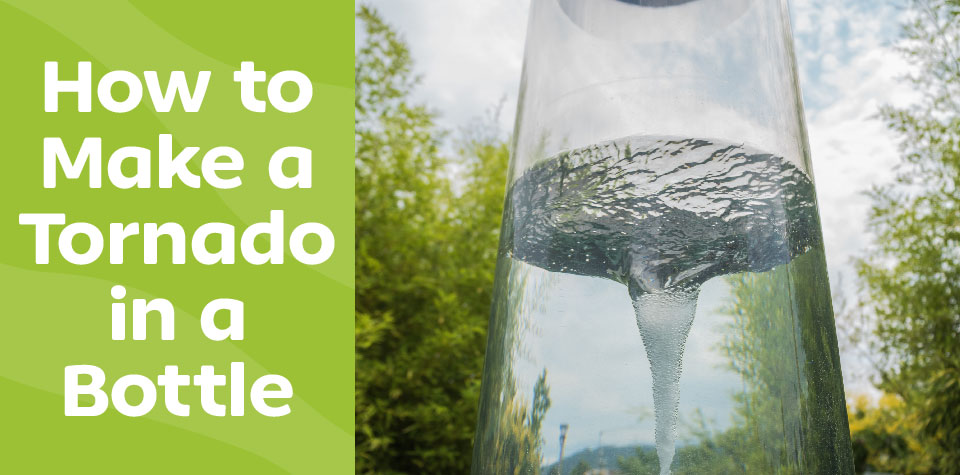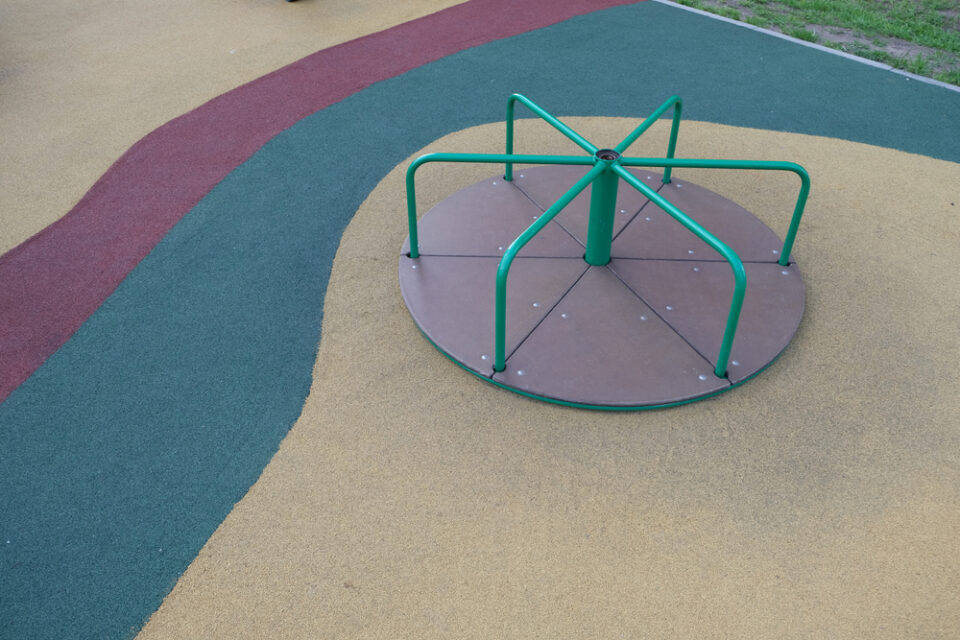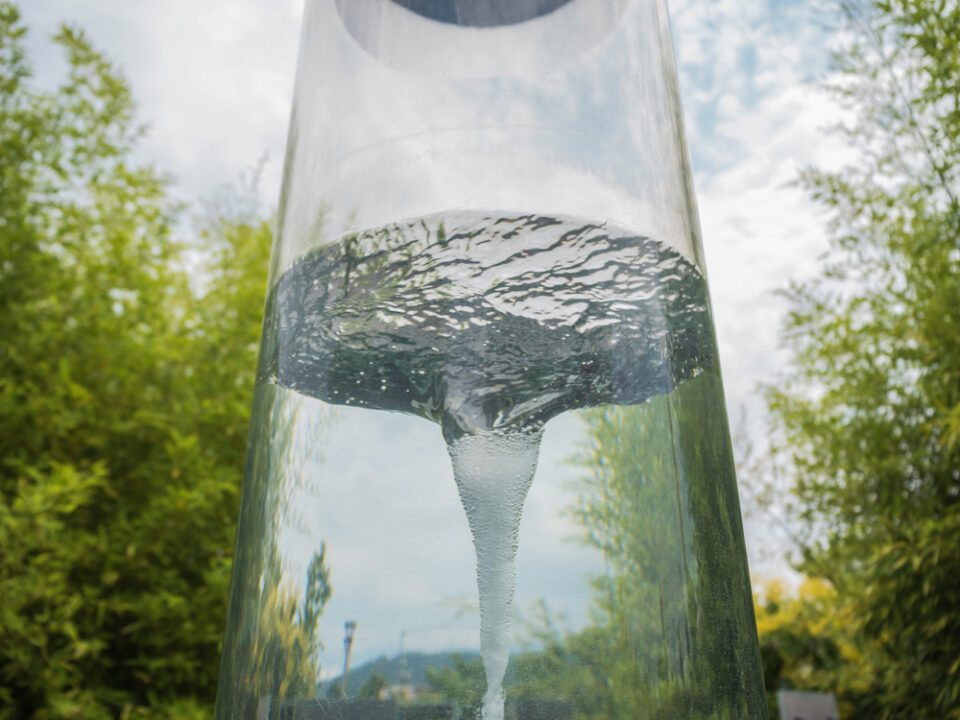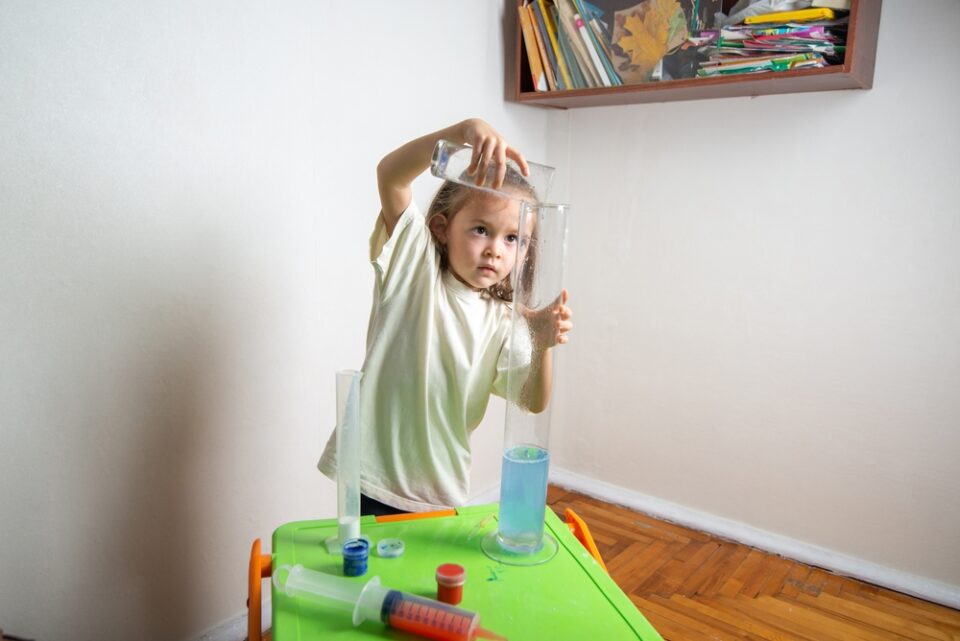
Spinning Science: How to Make a Tornado in a Bottle
Science is all around us, from the gravity keeping our feet on the ground to the rain that falls from overhead. So when it comes to teaching your kids about scientific concepts, there are countless examples to draw from.
Let’s consider tornadoes. While you don’t want to wind up close to one, they’re a fascinating demonstration of centripetal force, a type of push and pull that plays an important part in creating swirling vortexes. You can even demonstrate this concept from the safety of home by creating a tornado in a bottle! With just a few household items, your children will be whipping up their own mini storms in no time.

Understanding Centripetal Force
In general, objects move in a straight line when affected by an external force—like a ball rolling across the floor after you push it. However, when another force acts on the object, it can change its direction. Think of how when you throw a ball, it moves forward but also downward because of gravity’s pull.
A centripetal force provides a constant push or pull toward the center of an object’s path to keep it moving in a circle. Imagine a ball whirling around the end of a stick to which it’s been tied by a string. The string provides a constant pull toward the center that keeps the ball moving in a circular path. That’s centripetal force in action.
You and your kids actually witness centripetal force all the time! Here are a few real-world examples:
- Merry-go-rounds: This fun park activity is science at work. When children spin on a merry-go-round, they’re affected by a centripetal force that keeps them moving in a circle along with the ride. This force comes from their arms holding onto the bars.
- Washing machines: The spin cycle is another example of centripetal force. When the washing machine’s motor spins the drum at high speeds, it’s enacting centripetal force on your laundry (which actually helps separate excess water from your clothes). The force comes from the edges of the drum, which push the clothes in a circular motion.
- The solar system: The Sun’s gravitational pull keeps the planets in our solar system moving along their circular orbits. It’s thanks to this force that Earth doesn’t drift away into deep space.

How to Make a Tornado in a Bottle
The air in tornadoes moves quickly in a circular path around a center point (called the tornado core), sometimes picking up objects along the way—this spinning movement is what creates the funnel shape reaching up toward the sky. In this tornado science experiment, your kids will apply the necessary centripetal force to make the water in a bottle rotate in a circle and create a spinning vortex.
A water tornado in a bottle makes an excellent project for a school science fair, homeschool lesson, or weekend experiment. And the best part is, you likely already have the materials in the cupboard!
Children can perform each step of this experiment with supervision, but an adult may need to help younger children when necessary.
Materials
- 2 identical clear plastic bottles with a cap (such as old water bottles)
- Glitter and food coloring (your kids’ favorite colors)
- Dish soap
- Water
- Washer (approximately the size of the bottles’ openings)
- Duct tape
Directions
- Fill one bottle about ¾ full with water. Add a squirt of dish soap, a pinch of glitter, and a few drops of food coloring. (Don’t worry about exact measurements—these simply make the tornado easier to see).
- Screw on the bottle cap tightly to prevent leaks and spills. Shake the bottle to mix the contents together.
- Remove the cap. Place the washer on top of the bottle’s opening. Place the second (empty) bottle upside down on top of the washer so the two bottle necks are aligned.
- Use duct tape to secure the two bottles and the washer together and prevent leaks. (An adult may need to hold the bottles together while children tape, or vice versa.)
- Place one hand around where the necks of bottles join together and another at the bottom of the bottle filled with water. Quickly flip the bottles so the bottle with water is at the top, swirling the water-filled bottle in a circular motion as you flip. Place the bottom of the empty bottle on a flat surface and observe.
- If successful, the water in the top bottle will drain down to the bottom bottle in a swirling vortex that looks like a mini tornado. This is because the centripetal force you created by swirling the water while flipping the full bottle is pushing the fast-moving water toward the center of the empty bottle. The water is spinning and draining so quickly that it creates a tornado vortex you can hold in your hand (until the water drains completely).

Explore Science-Themed Subscription Boxes
This exciting tornado in a bottle experiment allows kids to observe centripetal force in the palm of their hands. Next, try out another engaging science experiment using water. And if your scientists-to-be can’t get enough of stormy weather, check out our Weather Lab Science Kit. It contains everything your children need to explore weather-based science, including natural events like volcanoes, tornadoes, and snow.
We also offer science-based subscription boxes for kids ages 5 to 10+. Our award-winning Science Junior box delivers creative activities for kids ages 5–8 every month, inviting them to discover the wonders of animals, optical illusions, and more. Once your kids are a little older, you can continue their learning with our Science Expeditions subscription box. Each monthly delivery, designed for kids 8 and older, explores a new scientific topic through fascinating experiments, exciting comic books, and fun badges.
